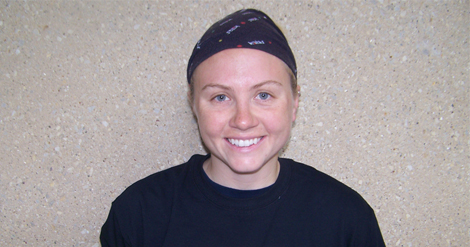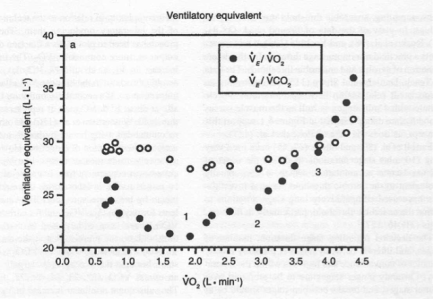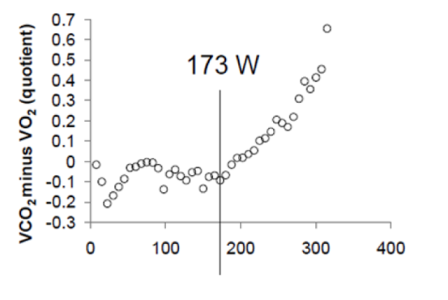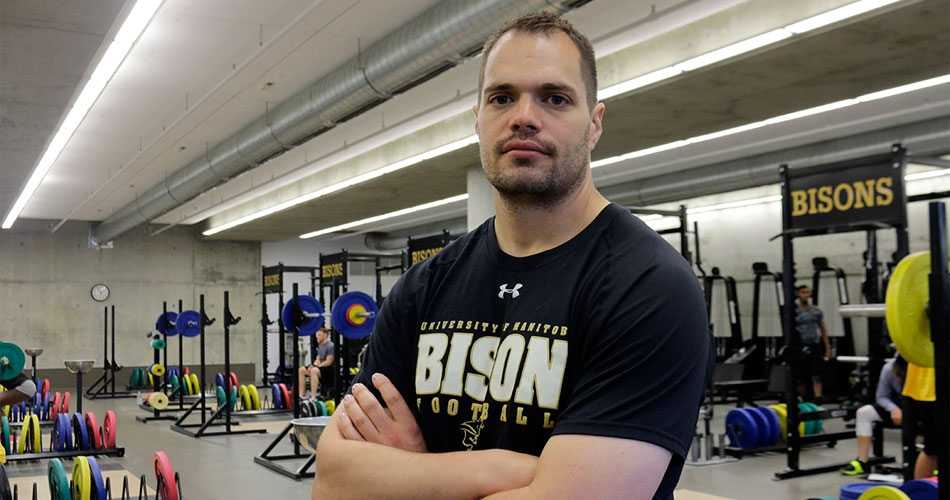Interview with Ida Clark
I was lucky enough to be introduced to Ida Clark by professor Robert Pettitt, with whom she did a lot of research on CP/W’ and CV/D’ models, along with 3 minute test (3 MT). The presentation that Ida Clark did on Critical Power and Graded Exercise Testing is a great resource that I have posted and referred to numerous times.
This summer Ida Clark was in her homeland Sweden and she have visited me in Hammarby IF training ground in Stockholm. We have spent couple of hours talk shopping about uses of Critical Power model. I decided to interview her, so everyone can learn about it as well. All I can say is – enjoy the insights!

Mladen: Thanks for your time to do this interview. Let’s begin with some information about you – who you are, what do you do, how you ended up here and what are your future plans?
Ida: My name is Ida Clark, I am originally from Vallentuna, Sweden, where I grew up. At the age of 17, I went to Canada for one year to play ice hockey at a hockey school in Alberta. After that year, I came back to Sweden to finish high school. Out of high school, I got recruited by Minnesota State University’s (MSU) ice hockey team. I came here when I was 20. I played 4 years for the MSU and received my bachelor degree in Physical Education non-teaching. During my last year as an undergraduate, Dr. Robert Pettitt was my professor and advisor. During that time, he had just started to read about the 3-min all-out tests and was very intrigued about it. When I took exercise physiology as an undergraduate, I fast realized I wanted to work within the field. I bothered Dr. Pettitt every day with questions and he saw how passioned I was about the topic. He offered me to come back after finishing my bachelor and pursue my masters in Exercise Physiology, at the same time work with him on developing a 3-min all-out test for running, I never hesitated to accept.
During my 2 year Master’s degree, I worked as a Graduate Assistant in the lab where I taught lab for undergraduate and conducted a variety of research, but for the most part within the 3-min all-out test. When I graduated with my masters, the professor who at the time taught exercise physiology resigned. Dr. Pettitt saw the opportunity to hire me as an Assistant Professor as I had no jobs lined up at the time and I knew the laboratory better than anyone else. So here I am, my second year as an Assistant Professor at MSU.
During this summer (2014) I went to Exeter University, UK and visited Dr. Andrew Jones and Dr. Annie Vanhatalo’s Lab. I met with them and we discussed my future to go and get my Phd at Exeter University, Fall 2014.
Mladen: Let’s talk GXT (Graded Exercise Testing) for athletes. Is there a protocol dependency in the GXT results? In other words, are there differences in scores (VO2max, vVO2max, GET [Gas Exchange Threshold], vGET) when one uses 1 min stages and 2 or even 3 minutes stages with 1km/h increase per stage? In some GXT we have done and in which I couldn’t request different protocol, I have seen pretty high results in vVT2 (Ventilatory Threshold) and vVO2max when 1 min stages were used and I knew the athletes were not that fit.
Ida: In our lab we use customized protocols for every subject that comes in to do a GXT, always done in 1-min stages. The test itself should be somewhere between 8-12 min long for accurate results. If the test is longer, than that you can get faulty results. We conduct a verification bout 3 min after the GXT is done. This is done at 2 stages below the end stage of vVO2max, lasting about 3 min in length. The verification bout serves the purpose to verify VO2max. If the subject reaches a higher VO2 in the verification bout you know the GXT was not done correctly or the subject quit early. I would recommend you to go and read Morton, 2011 in J Sports Sci, he explains why the peak power is higher in steeper ramp protocols. Though I do think you see higher results when performing 1 min stages on your “unfit” athletes due to their high W’.
Mladen: Speaking of VO2max, in more than 50% of athletes there is no clear plateau in VO2max, so secondary criteria has to be used. Is this no plateau effect related to protocol design and individual CP/CV (critical power/critical velocity)? For example, if two athletes have vVO2max of 19 km/h, but athlete A has CP of 16km/h and athlete B has 13km/h, how would that effect GXT and VO2max plateau, taking into account that both did same protocol? Will athlete A (lower CP) show plateau with higher chance because longer time in GXT over CP or in some cases will he quit before even reaching vVO2max due depletion of W’ if longer stages are used?
Ida: I have seen some subjects plateau and some peak. We have not done any research on if someone reaches a plateau dependent on their CP/CS. Though each subject will reach VO2max during a GXT that been administrated correctly, W’/D’ don’t matter. If you use the verification bout after the GXT the plateau is a non-issue.
Mladen: Tell us more about thresholds – what is the difference between the first and the second ventilatory threshold, GET, Lactate threshold (~2mmol), Anaerobic Threshold (~4mmol), Maximum Lactate Steady State (MLSS) and CP? How are these related and are they protocol dependent? For lactate testing stages should usually be longer than 4 min with some passive rest in between – can this be avoided with ventilation parameters using shorter stages? Can you share some scores in team athletes you are working with, in terms of velocities?
Ida: There are many different ways to calculate one’s threshold. You can calculate it with help of Ventilatory threshold (VT), GET and Lactate Threshold (LT). Though they all mean the same; when one is going from exercising in the moderate intensity domain to exercising in the heavy exercise domain (changing from using krebs’ cycle as their primary source of fuel to using lactate). When estimating threshold from VT you look at VE/VCO2 and VE/O2 (where VE is minute ventilation). VT1 is the ventilatory equivalent for VE/VO2 with VE/VCO2 level or slightly inclining (see below). VT2 is the inflection point for VE/VCO2, this is where once threshold should be estimated.

1 = VT1; 3 = VT2
GET we calculate with help of the v-slope method where we take VCO2-VO2 in L/min. This will give us a graph we can use to estimate once threshold, we look for the breaking point (see below)

Copyrighted material
In both these methods we look at respiratory equivalent (RQ) and make sure it is around 1.
Lactate and anaerobic testing you usually use 3 min stages where after each stage you prick for lactate until a inflection point >1mmol is present. When the 3 min is up and you have pricked for lactate you increase the power output or the speed and continue the next stage, the test should take ~20min
I believe it’s unnecessary to use Lactate to evaluate one’s threshold, it is a messier technique and time consuming. We use GET in our lab as it is easier method to administer and to find the break point of V-slope. The data is very reliable using the V-Slope (see Markus Amann comparing GET to LT).
CP or MLSS is the parameter that distinguishes the heavy and severe exercise domain. If you exercise at a intensity above CP you will have a slow component present while if exercising below CP slow component with a delayed steady state will be present.
When estimating CS from our athletes we have found that women distance runners have an average CS of 4.5m/s while soccer players are at 3.3 m/s.
Mladen: Critical Power is very interesting parameter. Can you tell us more about the usual estimations of it, compared to the new 3-min test? How hard it is to administer 3-min test? How do you manage to get maximum effort from team sport athlete in 3 min all-out test? How applicable is the test in the long-season sports (like soccer) and how often should it be repeated?
Ida: The 3-min all-out test (3MT) is the easiest way to get one’s CP/CS. You can do several exhaustive bouts at different intensities to estimate CP as well. To do the biking 3MT you need a bike with a load ergometer which most regular people do not have. We are currently working on how to make the 3MT more applicable to the population. The running 3MT is very easy to do, we have our students in Exercise Science here at MSU administering their own tests, where they calculate CS, D’, maximum performances at different distances and individualized intervals for themselves. There is a few way to administer it, either with a GPS watch, a cell phone or by video digitizing. With the GPS watch you just download the results on to a excel spread sheet. With the cell phone you need a track and put up cones with 20meters in between and record every time the subject runs part the cone, with this you can solve m/s there where traveling at during the test and then D’ and CS. With the video digitizing you do the same as with cell phone but instead record every time they pass a cone. You need to tell them to run all out and we have had success with all the athletes (soccer, hockey, track) we have tested this far.
When you calculate the velocity of the subject and then graph it you can detect for pacing, if you have an athlete that do pace you need to correct for it when calculating CS and D’ or have the subject re-tested. I believe the test is very applicable especially when it comes to intervals. We have our athletes complete the intervals twice a week, if they do them more (together with their normal training) they might over train as the last interval is designed to run them to exhaustion.
Mladen: One idea I have is to administer 3-min test using 20-40m shuttles, for couple of reasons. First one is that breaking the distance one doesn’t reach higher velocities which could lead to hamstring pull, especially at the beginning of the training period. Second one might be that the test is more sport/testing specific and involves CODs. Third one is interesting – with new GPS devices and software (CATAPULT) one is able to estimate Metabolic Power using velocity and acceleration data. Having Power estimates, instead of velocity, at least in theory, might be of better use in sports that involve a lot of start-stop activities to quantify their workloads. Have you ever tried to do something like this?
Ida: No we have never tried using Metabolic power instead of velocities. Though I do not see the idea why we need to, as the subjects are running at velocities in game and practice. I believe that is the measurements we should use. We are currently working on something in this manner but can’s share any data. We have tried to do the 3MT on hockey players too and found out that 150s is not needed to deplete their W’, we can do it in 90sec.
Mladen: Thank you one more time for taking your time to do this interview. Thank you very much for your insights and good luck with the future projects.











Responses